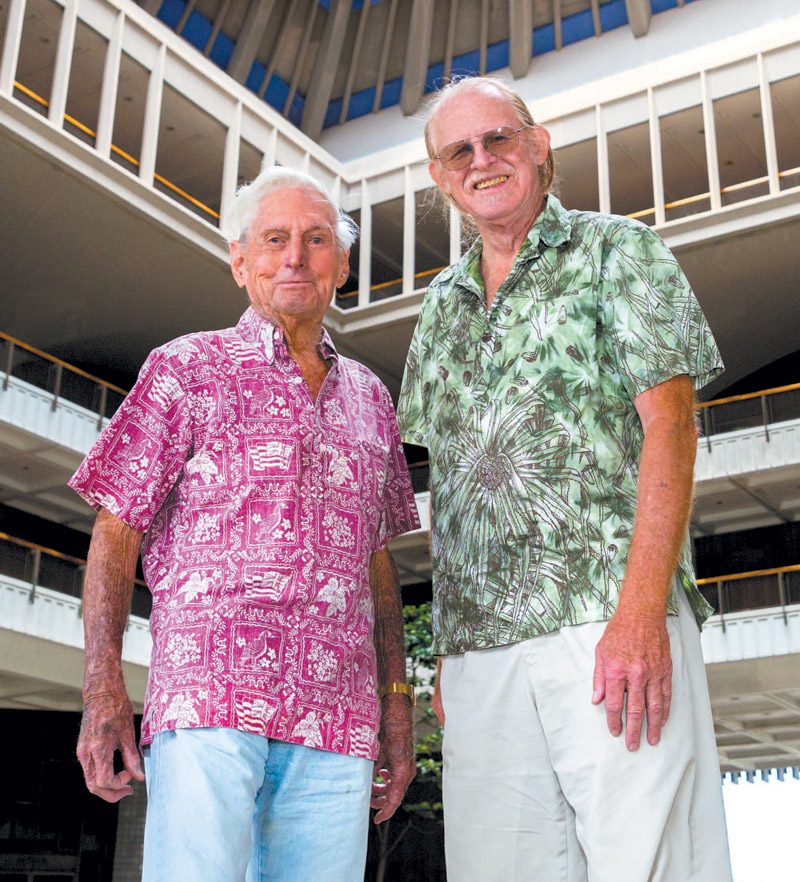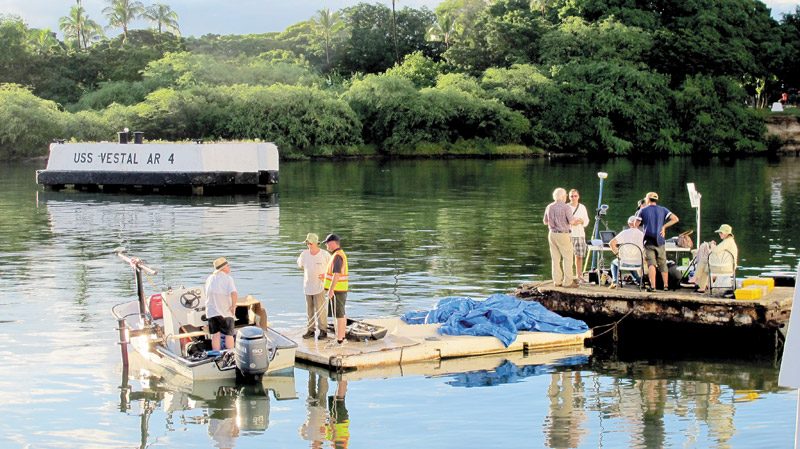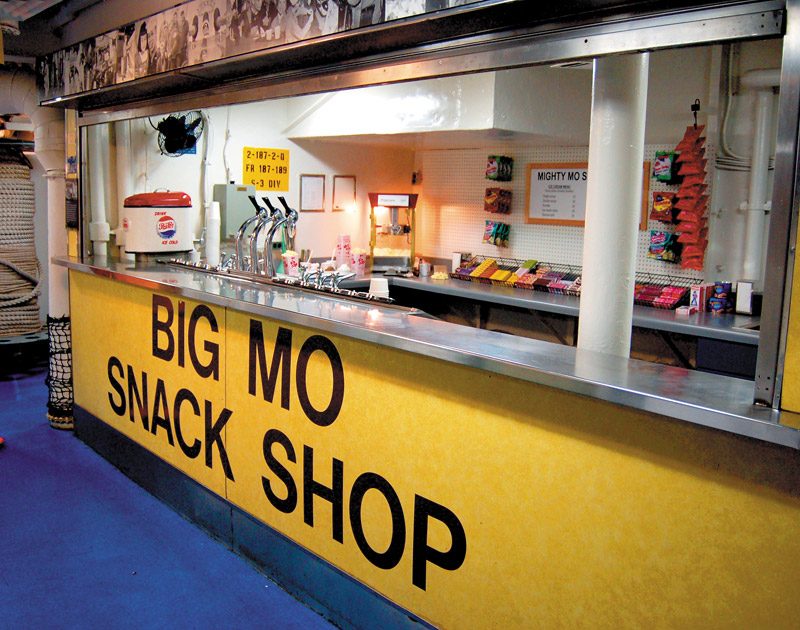Building History

Frank Haines (left) and Don Hibbard
Every building is a snapshot of a moment in time — a reflection of the people, culture and politics that lived around and in its stone, wood and glass.
Consider, says architectural historian Don Hibbard, the Alexander & Baldwin Building on 822 Bishop St.
Architects C.W. Dickey and Hart Wood designed the building in 1929 as a memorial to the “Big Five” company’s eponymous founders.
“It’s very much Western in style, but it’s also Asian in style,” Hibbard says. “A lot of the imagery on the building is drawn from Chinese architecture and design.
“At that point in time, Hawaii was starting to consciously celebrate that we were a multiethnic society, and so it reflects that value that’s coming forward.”
These are precisely the kinds of stories and insights that Historic Hawaii Foundation hopes to preserve for future generations. As the organization hosts its 43rd annual Preservation Honor Awards May 19 — including the presentation of the ninth annual Frank Haines Award to Hibbard — it hopes to stress that remembering our history defines our future.

Historic Hawaii Foundation’s annual awards dinner also recognizes buildings and groups devoted to preservation. Among this year’s nominees in the Preservation Commendation category is a mission to collect data on the submerged USS Arizona to create a computer model, and a renovation and rehabilitation of the interior of the Battleship Missouri Memorial to its active service days
Retired Architects Hawaii chairman and all-around legend Frank Haines is 96 years old. When he arrived on Oahu in 1948, the architecture scene was so fresh that a lot of the rules that define today’s construction didn’t even exist.
“I had a cousin who lived out in Makiki Heights,” he recalls. “From her lanai, I took a picture of Diamond Head. There were no buildings more than two stories high besides the Moana and Royal Hawaiian Hotel.”
Several years later, he found himself on a committee of architects and developers trying to hammer down a height standard for Waikiki high-rises.
“We finally came to the compromise that Diamond Head is (about) 750 feet high,” Haines explains. “We said no building should be more than half the height of Diamond Head. That’s where 350 feet was set.” There are exceptions made, of course, but the rule largely has stuck.
As development whirred through the city, Haines was among many who noticed that valuable bits of history were being lost in the cycle of destruction and rebirth.

Competed in the Achievements in Interpretive Media category. Frank Haines commented that the U.S. military really has embraced preservation in recent years PHOTOS FROM AUTODESK INC. AND BATTLESHIP MISSOURI MEMORIAL
He cites the example of 63 Merchant St. — the first office of Bishop & Co., the future First Hawaiian Bank, founded by Charles Reed Bishop. The building eventually was purchased by lawyer Harriet Bouslog, who heavily modified the original site.
“We saw so many things happening that should not have been happening,” Haines laments.
It was one of many such triggers that led to HHF’s birth in 1975 as a nonprofit preservation advocate.
“There was this growing awareness that places that matter to us can’t be taken for granted,” adds HHF executive director Kiersten Faulkner. “Those roots have stayed very relevant.
“The mission is the same: it’s to help people save places that matter to them.”
Haines and Hibbard are full of tales about just about every building you can think of (for example, they cheerfully elaborate on how Honolulu Museum of Art’s courtyard-centric structure is actually both a homage to and inversion of traditional museum design).
“Every building built has something to do with what it’s for and also it had to fit into the environment,” Haines relates. “One very important part of our environment is the fact that we can live indoors and outdoors, so every single building, from a private home to an office building, had to speak and should speak to that.
“One example is the block on Bishop and King streets. I designed that whole environment. And not only did I allow the open space, about an acre of open space, but also I provided many places for people to sit when they come out of their air-conditioned office building, to buy their lunch and sit outside and enjoy life.”
Telling and retelling these kinds of little-known anecdotes is crucial to HHF’s mission.
“Once people get a knowledge base, then they can get an appreciation,” Hibbard says.
And once people have an appreciation, they have a drive to protect and preserve.
“Education is always key,” Faulkner says, whether that be in the form of a plaque on a building, a lecture series, a book, a walking tour (like the ones Haines still leads around downtown), formal and informal classes, websites or anything else.
“People interact with historic places every day of their lives,” Faulkner added. “They shop, they play, they worship, they are educated — they live in places that have roots. These places have genealogy just as human families do. Everybody on some level is part of this environment, of being tied to places that came before, whether they’re aware or not.”
It is on that note that HHF hosts its annual awards, to recognize and champion those who continue to protect Hawaii’s most precious places.
Haines, who helped to establish the awards, also has given his name to HHF’s Frank Haines Award, which recognizes those who have devoted their lives to protecting Hawaii’s history and heritage.
Hibbard, author of Buildings of Hawaii and former administrator of the State Historic Preservation Division, is modest about the whole thing.
“It’s very much an honor,” he says.
Haines effuses on his behalf.
“Nothing is worse than having things forgotten about,” Haines declares. “(Hibbard’s) whole career has been based on making sure they are not forgotten, that documentation (of buildings) is extremely important.”
The work of preservation continues on — it never ends, really. As each year passes, a new crop of buildings comes to attention as significant and in need of saving.
One day, the high-rises sprouting up all around Kakaako and the island may well find themselves under the same scrutiny as those pre-World War II places, Hibbard says.
“I suspect 50 years from now, people will be looking at the year 2000 differently than we are today.”
He paraphrases a quote from science-fiction author William Gibson:
“Tomorrow’s people, when they look back, will not see the same history we see. They will recognize the fiction that we have become.”
The buildings, and us, too, will all be stories someday.
Historic Hawaii Foundation’s 43rd annual Preservation Awards takes place from 5 to 8 p.m. May 19 at YWCA Laniakea’s Fuller Hall and Courtyard. Tickets cost $60 ($50 HHF members). Deadline to purchase seats is May 5 at 2017honorawards.eventbrite.com.
For more information on HHF or to get involved, visit historichawaii.org.
A Capitol Story
Frank Haines was one of several architects who had a hand in designing the Capitol in 1968. He shared with MidWeek a few notable details about its creation.
“Three major themes governed the design of the Capitol,” he says.
“No. 1, we’re an island state, so the building rises up out of the water. The second thing is that we are a volcanically created state, so the House and Senate chambers are shaped like a volcano and covered with volcanic rock.
“The third thing is the royal palm tree has always been a tradition for many years, representing the ali‘i, so the tremendous columns that are on the state Capitol are reminiscent of royal palms.”
He also pointed out that the Capitol’s design subtly keeps legislators accountable. In other states, these buildings have passageways that allow representatives and senators to flit from chamber to office without encountering constituents.
Not so in Hawaii. “Even Gov. Burns, when he did the opening remarks at the Capitol, stressed that fact. Not only is the building open, but it’s reflective of the openness of Hawaii’s society,” Don Hibbard adds.






